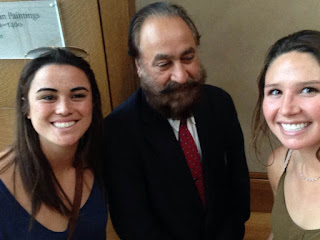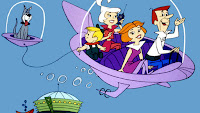The Getty is easily one of my most favorite destinations in Los Angeles. And of course the day we chose to go was one of the most beautiful days in a while and the lines to get in were atrociously long. Despite that fact, once we got inside all my bitter feelings from sitting in traffic melted away and I was prepared to wander the glorious halls of the Getty. On the tram ride up I wasn't sure what I was going to find inside that I could link to what I have learned in this class. Low and behold I was pleasantly surprised when I walked into the very first exhibit on Renaissance art. It had been a week or two after out nanotechnology lecture, so the information I had attained was still fresh in my mind and I instantly linked the illuminations of a book scripture from the early Renaissance period to the chemical reactions discussed in out nanotechnology lecture.
As it was mentioned in the lecture on nanotechnology and art, there was a cup known as the Lycurgus Cup that looks green when illuminated from the front, but red when illuminated from the back. This is all due to the material that the ancient Romans used when constructing it. This is why they can be seen as the "pioneers" of nanotechnology without them even really knowing it. The same concept can be applied when it comes to developing the illuminated manuscripts. While these manuscripts were created a good time after the Lycurgus cup, it is possible that people had perfected the use of the right materials needed in order to make a work of art "glow" by the time these manuscripts were written and painted.
 |
| This is the manuscript in its full form after the display before it had broken down the steps to get proper coloring. |
Below are pictures of the ingredients used to make an illuminated manuscript, the variety of colors and mediums used truly astounded me!
 |
| Here, my roommate and I are at the Getty taking a picture with our good friend who was securing the exhibit. |












































.jpeg)

.jpg)



